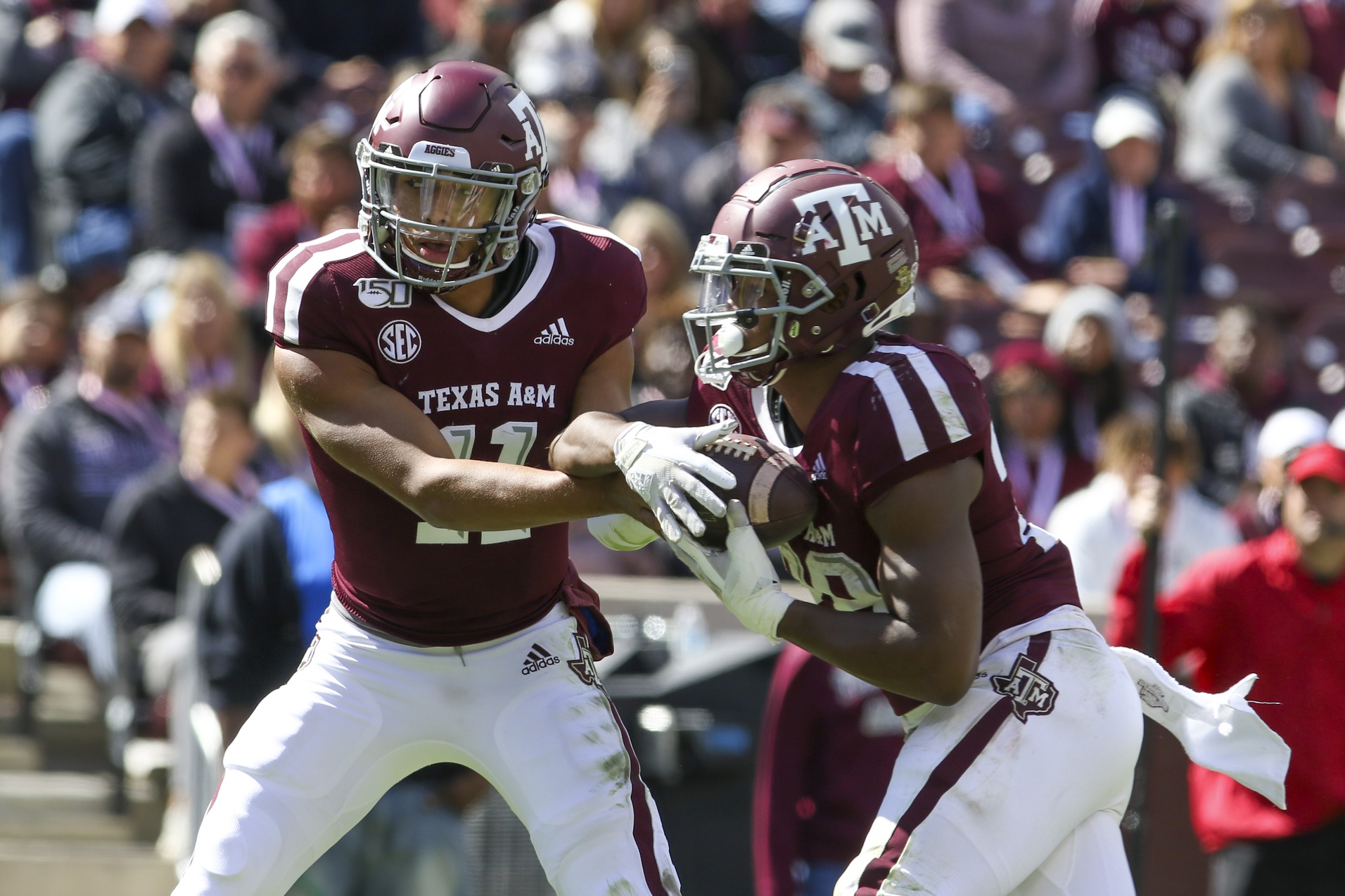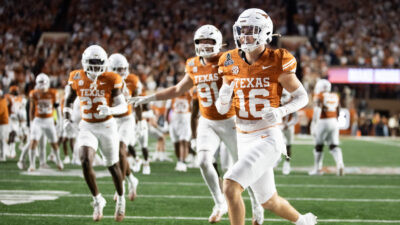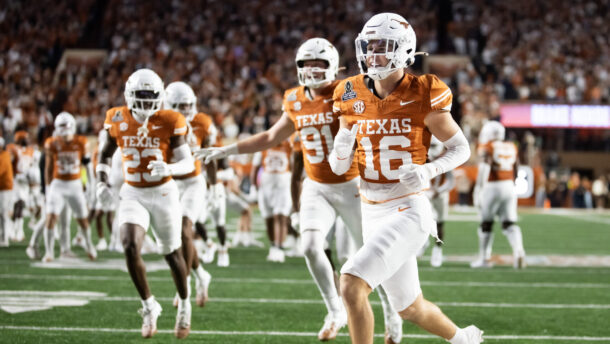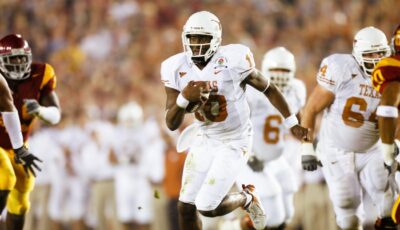
Besides Kellen Mond’s development, 1 area of improvement will determine Texas A&M’s 2020 upside
When Trayveon Williams announced his decision to leave Texas A&M for the NFL at the end of the 2018 season, I had a realization that I’m sure plenty of Aggie fans did.
Williams delivered one of the most under-appreciated seasons we’ve seen from an SEC player in the 21st century. Usually, we celebrate players like Williams who gain over 2,000 scrimmage yards in a season. Versatile, game-changing backs like that are supposed to be major holes to fill, yet for whatever reason, that didn’t seem to be a concern with the Aggies’ 2019 preseason outlook.
As we found out, the Aggies missed Williams. Badly. Injuries on the offensive line and to opening day starter Jashaun Corbin didn’t help, but the end result was a 60 rushing yard/game decrease from 2018 to 2019. And if you dig a little deeper, it was actually worse than what that final number suggested.
In their 5 matchups against teams who finished in the top 15 of the Associated Press Top 25, A&M averaged just 24 carries for 61 yards per game (2.5 yards per carry). Yikes.
Much will be made this offseason about Mond’s improvement being the thing that’ll determine A&M’s success in 2020, and understandably so. But man, that ground game is in need of an even bigger improvement than Mond.
On the surface, that backfield production might look imminent. After all, Isaiah Spiller is back after a true freshman season in which he racked up 1,149 scrimmage yards and double-digit touchdowns. The guy caught 29 passes as A&M’s starter following Corbin’s injury, which seems similar to what we saw from Williams. Those are all positive things.
I can’t wait to draft Isaiah Spiller in devy drafts next spring!
6’1” 220 freshman RB with juice and pass catching ability 28 receptions. He’s a good one. pic.twitter.com/9mP8BKoPr6
— Ray G 🏁 (@RayGQue) December 28, 2019
The negative is that Spiller averaged just 26.6 rushing yards against those 5 aforementioned top-15 finishers. And of his 946 rushing yards in 2019, 35% of them came against UTSA and FCS Lamar (half of his touchdowns came in those contests). He averaged 10.7 yards per carry against Group of 5/FCS competition and 3.8 yards per carry against Power 5 competition.
The takeaway from Spiller’s freshman season, which also saw him deal with ball-security issues — he lost a fumble in each of his first 3 SEC games — wasn’t that he’s destined to struggle against elite SEC defenses. It’s that he’s not the type of back who’s going to overcome bad-to-mediocre blocking and put an offense on his back. At least not yet.
If Spiller is going to put himself in the All-SEC discussion, he’ll do so because A&M’s offensive line stayed healthy and got better. Will that happen? I don’t have a crystal ball, but the good news is that 4 of last year’s 5 starters are back. A&M should have 3 senior starters, which suggests that improvement is at least likely.
A key for A&M’s ground game will be avoiding falling behind the sticks. Last year, the Aggies were No. 107 in the FBS in sacks allowed. Part of that could be attributed to Mond’s habit of holding onto the ball too long, and part of that could’ve been that Carson Green and Dan Moore Jr. struggled on the outside. Both Green and Moore started each of the last 2 years — they also stayed healthy last year — which meant they were there during Williams’ breakout 2018 season.
As good as Williams was, the whole “A&M struggles to run the ball against elite teams” thing was sort of there in 2018, too, albeit not in quite as egregious fashion as 2019 (A&M also had 61 rushing yards on 22 carries against Mississippi State’s No. 2 scoring defense in 2018):
[table “” not found /]To recap, that’s 9 games in which A&M faced a team that finished in the top 15 during the Fisher era. Of those 9 games, A&M only averaged 4 yards per carry in 3 of them. In those 9 games, A&M averaged 3.2 yards per carry. That’s not gonna cut it.
Those numbers against top-15 teams are obviously lower than the overall numbers for any team, but for an A&M squad that’s being picked to make that leap to among the nation’s elite, that seems like an important metric.
A&M has just 1 top-15 finish in the 21st century. That, of course, was Johnny Manziel’s Heisman Trophy season of 2012. That was also the only time in the last decade in which A&M boasted a top-15 ground game. Coincidence? Probably not. It’s probably also not a coincidence that Spiller averaged 6.3 yards per carry and had 9 of his 10 touchdowns in A&M’s wins vs. his 3 yards per carry and 1 score in A&M’s 5 losses.
Spiller will have help from the likes of Mond and younger, faster backs like Ainias Smith and Devone Achane, but it’s no secret how Fisher uses his feature back. Heavily. The only A&M backs besides Spiller who got 25 carries last year were Corbin, Cordarrian Richardson and Jacob Kibodi, all of whom entered the transfer portal.
After he took over as the starter following Corbin’s injury, Spiller averaged 17 touches per game. That number was at 20 in A&M’s final 7 games, which happened once he stopped fumbling.
It’s going to be the Spiller show, for better or worse. He’s a fairly decent bet to lead the SEC in touches, especially now that Kylin Hill is playing in Mike Leach’s Air Raid offense and Trey Sanders is joining forces with Najee Harris at Alabama. If Spiller is even in that conversation heading into bowl season, that’s a good sign for A&M. That would mean that the Aggies weren’t forced to abandon the ground game like last year against those top-15 teams.
There’s pressure on Fisher to take full advantage of the things working in his favor in 2020. He’s got an extremely favorable schedule and, in an offseason marred by a pandemic, he returns the SEC’s most experienced quarterback along with a higher percentage of returning production than any other SEC offense.
Now would be an awfully good time to turn that ground game into an advantage instead of a liability.
Connor O'Gara is the senior national columnist for Saturday Down South. He's a member of the Football Writers Association of America. After spending his entire life living in B1G country, he moved to the South in 2015.







